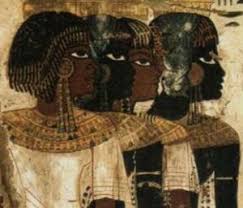Introduction
The Nubian people, with their rich cultural heritage and deep historical roots, are one of the most fascinating groups in the African continent. Originating from the region along the Nile River, spanning parts of modern-day Egypt and Sudan, the Nubian have a history that dates back thousands of years. Their contributions to civilization, art, and culture continue to resonate in the modern world.
Historical Background
The history of the Nubian people is intertwined with that of ancient Egypt, as the two civilizations were both neighbors and rivals. Nubia was home to several advanced kingdoms, including Ta-Seti, the Kingdom of Kush, and the Meroitic Kingdom. These kingdoms were known for their wealth, military prowess, and architectural achievements. The Kingdom of Kush, in particular, is noted for its role in the history of ancient Egypt, as it eventually ruled over Egypt during the 25th Dynasty, a period often referred to as the “Kushite Dynasty.”
Nubians made significant contributions to the cultural and political landscape of the Nile Valley. They built impressive structures, such as the temples and pyramids at Meroë, and left behind a rich legacy of art and inscriptions. The Nubian pyramids, which are smaller but more numerous than those in Egypt, serve as a testament to their architectural skills and their complex social and religious life.
Cultural Heritage
Nubian culture is renowned for its vibrant traditions, including music, dance, and dress. Traditional Nubian music often features the use of instruments such as the tambourine, lyre, and drums, accompanied by rhythmic dancing. Nubian dance is characterized by its energetic and expressive movements, often performed during celebrations and social gatherings.
The Nubian language, which belongs to the Nilo-Saharan language family, is an essential aspect of their cultural identity. Although the language has several dialects, it is a symbol of continuity and resilience amidst changing times. Efforts to preserve and promote Nubian language and culture continue to be important for the community.
Nubian art is distinguished by its use of bright colors and geometric patterns. Traditional crafts include beadwork, pottery, and weaving, which are used to create items for both daily life and ceremonial purposes. Nubian architecture is also notable, with distinctive round houses that reflect their adaptation to the local environment.
Modern Challenges and Resilience
In recent decades, Nubians have faced challenges due to political and social changes in the region. The construction of the Aswan High Dam in Egypt in the 1960s led to the displacement of many Nubians, as their ancestral lands were flooded. Despite these challenges, the Nubian people have shown remarkable resilience and continue to work towards preserving their cultural heritage.
Efforts are being made by various organizations and individuals to document and revitalize Nubian traditions and history. These initiatives include cultural festivals, educational programs, and the promotion of Nubian art and literature. The Nubian diaspora, spread across various countries, also plays a crucial role in maintaining and celebrating their heritage.
Conclusion
The Nubian people have a profound legacy that spans millennia, marked by their contributions to ancient civilizations, their vibrant culture, and their enduring spirit. As they navigate the complexities of the modern world, the Nubians continue to honor their past while embracing the future. Their story is a testament to the rich tapestry of human history and the enduring strength of cultural identity.



